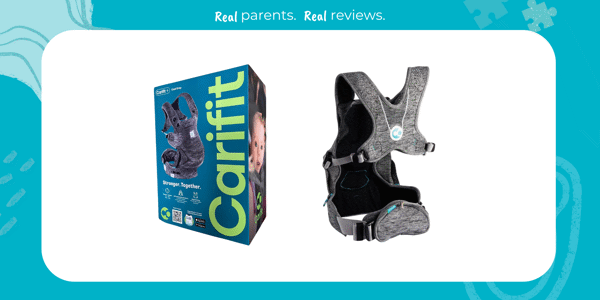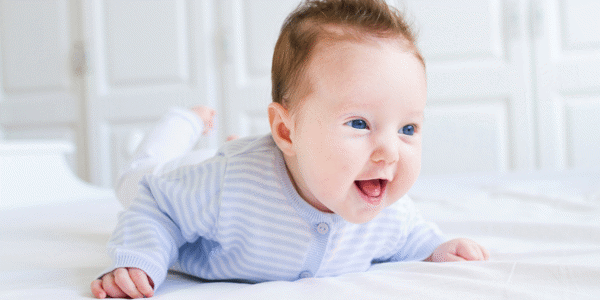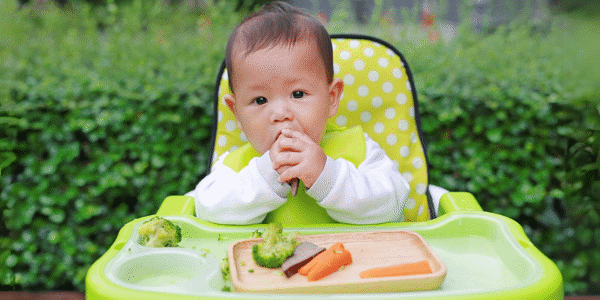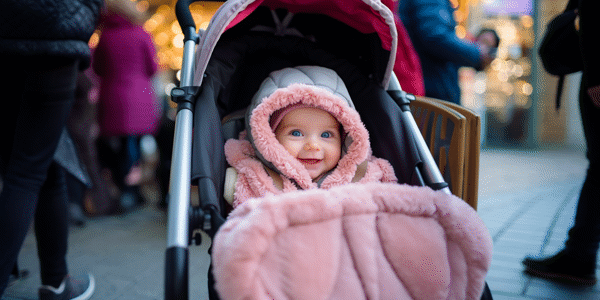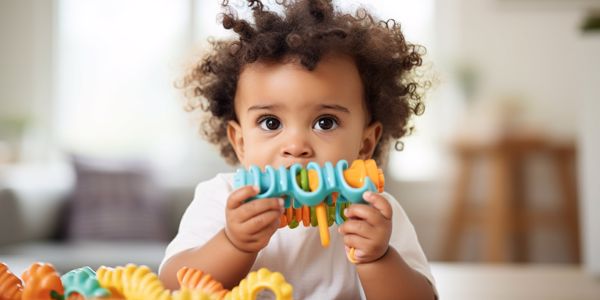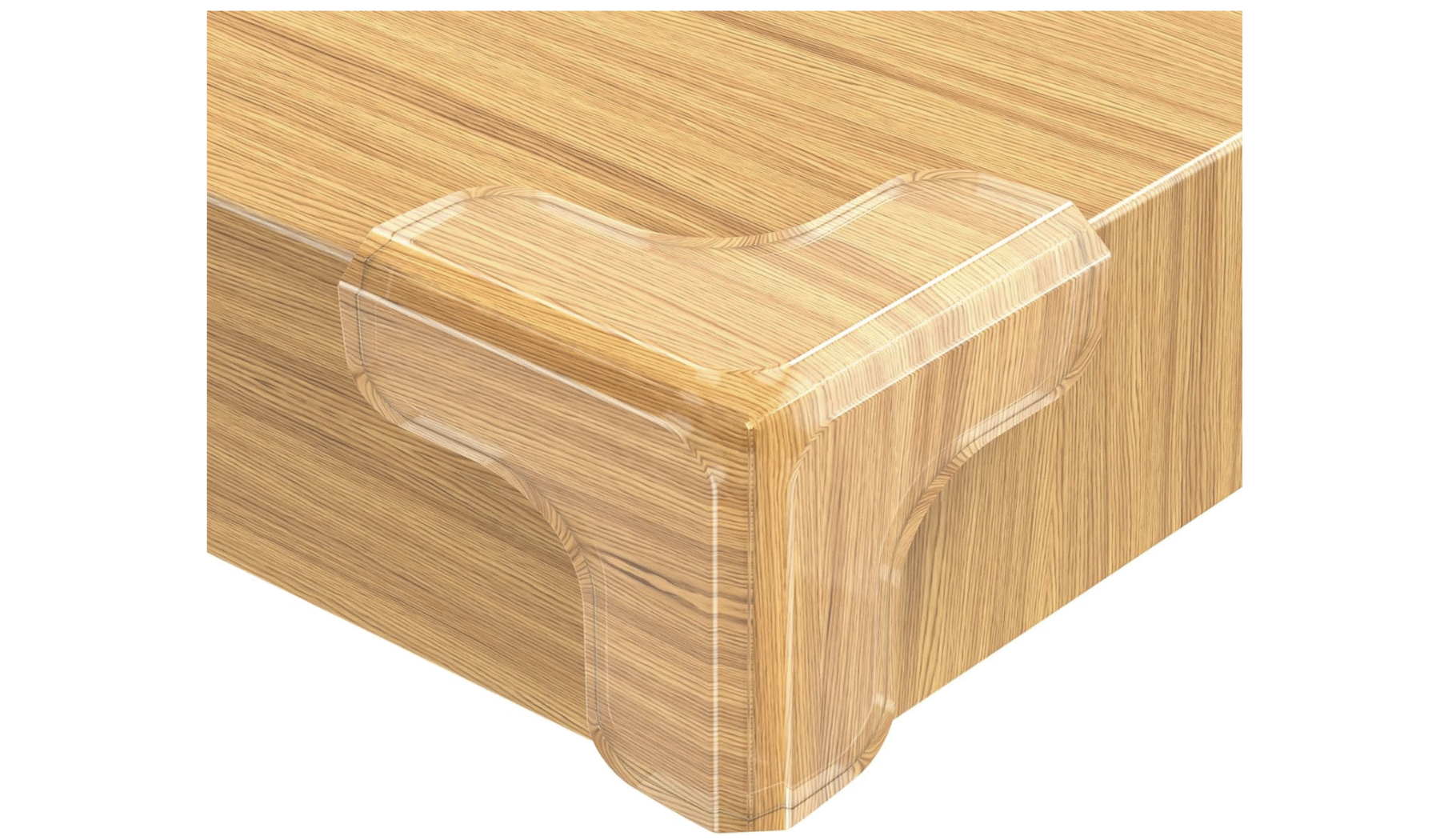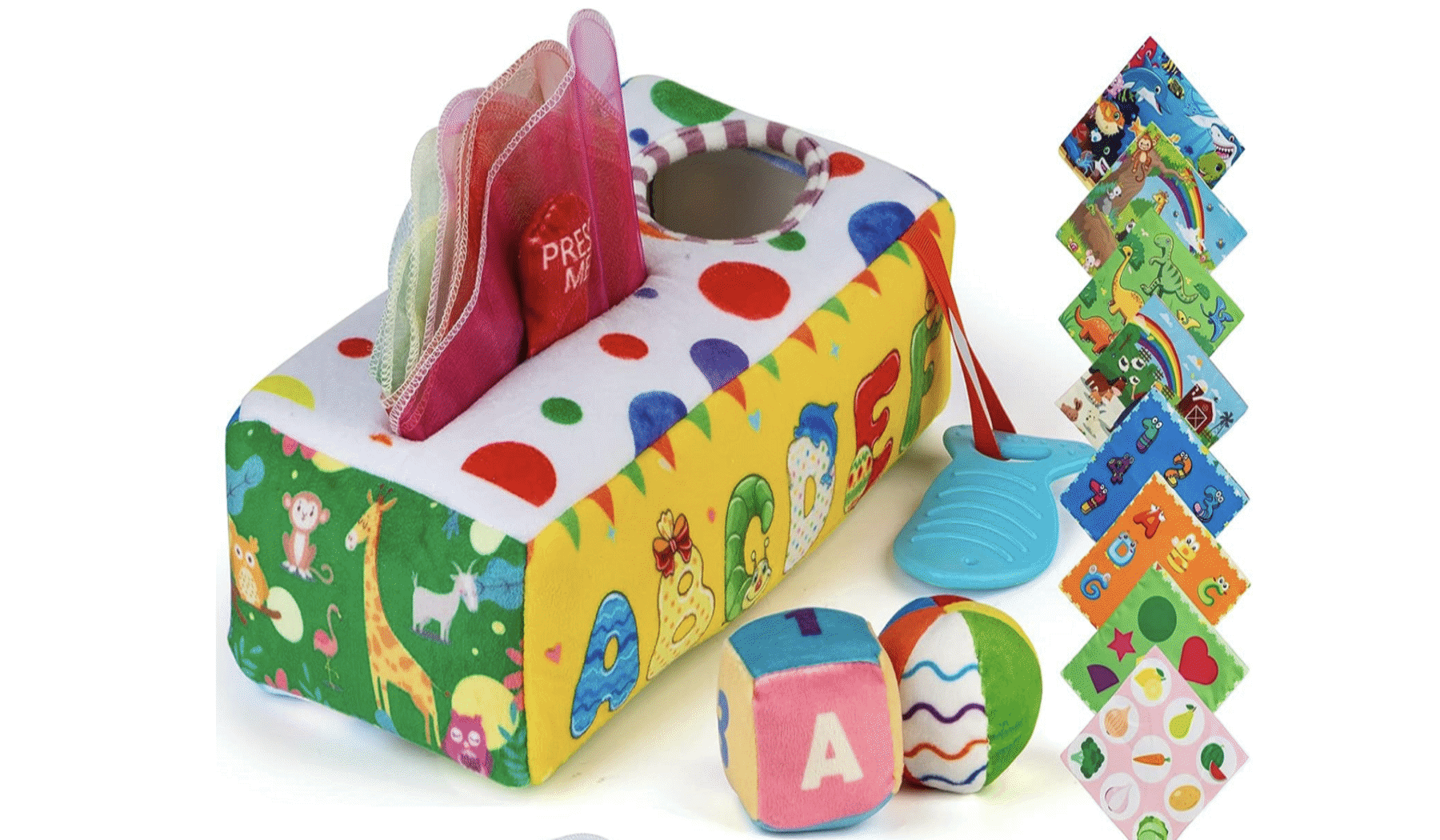Many parents note this stage as the time when their little bundle of joy became more interactive and start noticing their baby expressing their love back to them properly for the first time. After months of adjusting to life as a parent, feeling your baby showing that they love you back is an amazing feeling.
Your little one has transformed from a tiny, fragile newborn into an active and engaging baby. During this time you may have noticed several big changes to their physical appearance and growth. While growth patterns may vary, most infants have doubled their birth weight by this stage.
According to WHO growth charts, girls should be somewhere between 10 and 19 pounds (4.5kg and 8.6kg) and between 22 and 26.5 inches. Boys will likely be weighing in somewhere between 11 and 20 pounds (5kg and 9kg) and measuring between 23 and 27 inches.
Your Health Visitor or GP should be plotting their weight in their ‘red book’ and should be starting to see a steady increase in both weight, length and head circumference, and following a centile. Some babies can drop centiles or even jump centiles if there have been any feeding issues, allergies, illness or just a very large appetite. Consult your GP if you feel that their growth rate is abnormal so they are able to investigate the reasons.
These growth spurts are fuelled by a healthy appetite and you may find yourself amazed at the speed with which your little one is jumping onto the next size up in their clothes!
Around this age your baby's face becomes a canvas of ever-changing expressions, letting you see glimpses of them in totally new ways. They are now more capable of imitating your facial gestures and responding to your smiles. You'll be treated to a delightful array of smiles, giggles, and coos, so prepare for plenty of laughter with your little one.
While most babies are born with the colour of hair and eyes they will have later in life, it’s quite common for them to show subtle changes during the first few months, indicating that they might not stay their initial colour. You may notice your baby's hair becoming thicker, changing in texture, or developing a bit of a curl.
Their eye colour could also intensify or develop slight variations, which tends to be a case of the colour getting darker rather than lighter. These changes are generally just a result of genetics, meaning they’re nothing to worry about and will become more apparent over time.
From tracking objects with their eyes to recognising familiar faces, your baby's visual development at this age is amazing to watch. One noticeable improvement during this month is a rapid improvement in your baby’s distance vision. They can now see things and distinguish people across the room, and focus in on things that aren’t right in front of them.
Your baby's colour vision has also progressed to a point where they can distinguish a wider range of hues and varying colours. While they may not yet perceive colours as vividly as adults do, they are learning to differentiate between primary colours such as red, blue, and yellow.
In the first few months of your baby’s life it can sometimes be normal for their eyes to slightly cross or wander. Still, if you’re noticing that your baby’s eyes are still wandering, or they appear to be squinting, you should speak to your GP. They’ll be able to let you know if these symptoms are just a normal part of their eye muscle development or something that should be looked into more.
One exciting thing that you might start to notice throughout this month is them starting to imitate the sounds that you make and repeat them back to you. This responsiveness is exciting for a lot of new parents and it can really feel like you’re having a back and forth conversation with your little one, even if they aren’t making much sense!
This new-found interaction is amazing for your baby’s development and will help them to start understanding the different sounds and syllables that make up speech. Speak to your little one throughout the day, and try to get into the habit of talking through your daily routine with them. If you do, before long you might find them recognising their name.
As well as new developments in their responsiveness, this is a common time for babies to start vocalising different noises to express that they want something or show how they’re feeling. You might notice that they make a lot of ‘p’ and ‘b’ type babbling sounds when they’re feeling unhappy or uncomfortable and sharper ‘k’ and ‘j’ type sounds instead when they’re feeling happy and content.
Long gone are the days of your little one as a newborn who only knows how to eat, sleep and poo. They are becoming more engaged, interactive, and expressive every day, showing a deeper understanding of the world and people around them.
By this point your baby is likely to exhibit a growing need for social engagement. You’ve spent months chattering away to them all day and getting nothing back, but this month you might finally get some acknowledgement that they enjoy the talks you have with them.
They may cry or become fussy when your interaction with them ends. This is their way of letting you know that they were enjoying playing and chatting with you and they’re not ready for it to end! Obviously, you can’t realistically spend all day in one-on-one interaction with your little one and there are times when you’ll need to put them down to get things done. But, when possible, responding to these new cues will help them feel secure and valued, which is so important going forward.
During this stage your baby is just beginning to discover the range of emotions they can express. They may start displaying happiness, surprise, and even frustration or sadness. As a parent, it's important to acknowledge and validate their emotions, even at this early stage.
Responding promptly to your little one’s needs and providing comfort when they're upset, or alternative engagement when they seem bored or frustrated, helps them build a sense of security and trust. It also encourages them to express their emotions and builds the connection that these emotions will be properly recognised and acted upon.
Your little one’s fine motor development really starts to take centre stage at this point. For more information on what fine motor skills are, head to month 1 here.
Last month your baby started reaching out with one hand to grab objects and you might have spotted them holding onto smaller objects for a few seconds before letting them go. This newfound hand-eye coordination is an essential skill that will continue to develop over time.
You’ll also have noticed your little one begins to bring their hands to their mouth intentionally, helping them explore objects orally and laying the foundation for self-feeding skills in the future. This is an important development step but also a reminder of how important it is to keep any objects that are a choking hazard out of reach!
As this month progresses you will start to see your baby reaching out to grab objects with both hands, rather than one. They’ve started to realise their own strength and they’ll be more committed than ever to get a hold of toys and objects that grab their interest.
With their new skills, you might also catch your little one holding their hands out in front of them, staring in awe. After months of not being able to do much it’s quite the discovery to realise that those little hands are their gateway into exploring the world around them!
Keep Play Time Simple- When you’re trying to keep your little one entertained during play time, it can be easy to give them a range of different toys all at once to give them options of which ones they want to play with. But this can actually make it more difficult for them to have an engaging play session. Instead give your baby one toy at a time. This allows them to properly focus on one thing at a time and explore each new thing without feeling rushed or overwhelmed.
Rattle Play- Offer your baby toys that are easy to hold and manipulate, such as rattles, soft blocks, or textured balls. Buying a few different rattles is a great way to spot which noises make your little one most excited.
Introduce Different Textures- Offer a variety of toys with different textures, shapes and sizes to your little one. These will stimulate feelings in the palm of their hand and encourage them to practise the different ways to grasp different sized objects.
At this stage your little one will be starting to show their growing strength! During tummy time you’ll start to see them lifting their head up off the ground to look at the world around them and lean their weight onto their forearms. This is an important skill and will play a huge role in developing their neck muscles.
By this age your little one may start showing signs of preparing for rolling over. This newfound skill is an exciting accomplishment for both of you. Rolling over signifies enhanced muscle strength, coordination, and increased spatial awareness. It shows that all of the long hours of night feeds have paid off! They might start straining to roll this month, or even start making their way over if they're particularly eager. If not, don't be concerned. Many babies don't roll over until around 7-months-old.
With this increased movement you’ll need to keep a closer eye on your little one during nappy changing…once they’ve mastered it, they won’t hesitate to take any opportunity to be on the move!
If you’re still swaddling your little one, you should stop this once they’re showing signs of rolling over. Rolling increases the chances of your baby ending up on their tummy during sleep, which could interfere with their breathing, especially when swaddled. It is crucial to prioritise safe sleep practices and create a safe environment that reduces the risk of sudden infant death syndrome (SIDS) or any other sleep-related incidents.
Transitioning your baby from swaddling to sleeping in their own cot allows them to explore their newfound motor skills freely and safely.
When your little one is sitting on your knee, or otherwise supported, they’ll soon be able to hold their head up steadily in line with their torso without any support to the neck. Don’t forget about tummy time even as your little one grows. They should have tummy time at least 3 times a day, for 10 to 15 minutes each time. Tummy time is important for the strengthening of the neck, shoulders, and torso muscles.
This month, it should now be safe to start carrying out some new fun activities and games to help build your baby’s strength.
Don’t forget, even laying on your chest counts as tummy time!
These next few weeks can often be a time of a lot of change which can impact baby’s feeding routine. On average, your baby will consume around 24 to 32 ounces (710-950 ml) of breast milk per day by the end of this montj. However, every baby is unique and their individual needs may vary. Some babies may consume more or less milk depending on factors such as growth spurts, activity levels, and metabolism. Trust your instincts when feeding your little one and follow your baby's cues to determine if they are getting enough milk.
Even though your little one is getting more efficient at breastfeeding and can take in more milk in a much shorter amount of time, this doesn’t always mean speedy nursing sessions. As your baby becomes more aware of their surroundings, they might easily get distracted during feedings. Try finding a quiet, calm environment for nursing, free from excessive noise or visual stimulation. You could also try nursing your little one in a sling or with a muslin or other blanket type object shielding them from any distractions going on around you, keeping them focused on the task at hand.
The UK Department of Health and the NHS recommend exclusively breastfeeding for the first six months of a baby’s life. If you are still exclusively breastfeeding, remember that both you and your baby still need a daily vitamin D supplement (8.5 to 10 micrograms).
If formula feeding, aim for your baby drinking between 120-180ml (4-6 ounces) at every feed by the end of the month, which should be roughly every 4-5 hours. But again, go by your baby’s lead as to when they’re finished or if they’re still hungry. If they don’t want those last drops, don’t force it. If they’re crying or fussing for more, do oblige!
As long as your baby is getting enough wet nappies, is gaining weight and is otherwise happy and healthy, you have nothing to worry about.
As your little one grows you may notice a shift in their behaviour and curiosity around food. They’ll start showing a growing interest in the world around them, particularly when it comes to meal times! This newfound curiosity is a natural progression, signalling that your baby is close to being ready to start weaning onto solid foods in the future.
You might also spot them imitating a chewing action as their eyes are fixated on your food, looking like a hungry child who hasn’t been fed yet. It can be tempting to take these actions as signs that your baby is ready to start weaning now but this usually isn't the case. While some parents choose to start a bit earlier, according to the NHS weaning should start at around 6 months and can start with either pureed food, or straight onto finger food, also known as ‘baby-led weaning’.
At this age your baby has better control of their head and will find it easier to chew and move food around their mouth, making it safest to start weaning at this point. If you are looking for medical advice related to weaning and when to start, head to the NHS’ Start For Life or speak to your GP.
When it comes to sleep, this month brings both good news and bad news. The good news is that your little one should now be sleeping for longer stretches than in previous months and might have their longest block of sleep for around 5 or 6 hours throughout the night.
They should also finally start to show that they’re naturally more tired in the evening time and this sets you up well to introduce a consistent and relaxing bedtime routine around 7pm, to let your little one wind down for the night properly and learn that this indicates time to sleep.
Now with these steps in the right direction, does come some bad news, at least for some of you. Just as you get your baby into something resembling a sleep routine this month, be prepared that the four month sleep regression is on its way.
This sleep regression is a common experience and if your little one suffers from them, they tend to happen every couple of months from this point until their first birthday. Some babies never experience them, some might go through one, and some might have a few noticeable ones. Head here for more on what causes sleep regressions.
By this point your little one has started to produce the hormone melatonin, which helps to regulate our sleep cycles. This means that their sleep is beginning to resemble more closely our own adult sleep cycle, which is broken into multiple stages of light and deep sleep.
Between each cycle of sleep, your baby will likely be waking up, as they haven’t quite mastered how to get themselves back to sleep at this point. These brief ‘wake’ periods are the cause of the disruption that happens in a sleep regression, as they find themselves waking up and needing some comfort to get back to sleep.
At around 16 weeks your baby will be due for their next round of routine immunisations. These vaccines are essential to protect them from serious illnesses. At this stage your baby will receive:
Your baby will have had a lot of vaccinations in the last few months and it can be quite nerve-wracking as a parent. During the appointment your GP will be happy to provide more information about the vaccines, the illnesses they prevent and any side effects to look out for. It can often help to know a bit more about the process and why it’s being done, to reassure you on the process as a whole.
To help relieve discomfort following these injections, offer your little one some milk to comfort them, and give them a recommended dose of paracetamol immediately to reduce residual pain and control any emerging fever caused by the MenB vaccine. Your doctor will also probably advise you to provide paracetamol every 4-6 hours for 24 hours following the MenB jab to control any subsequent fever.
Babies can get their first teeth anywhere from a few months old, until after their first birthday. While they probably won’t get their first tooth emerging for a while, it’s not uncommon for your little one to start showing symptoms of teething.
You might notice your baby's mouth becoming wetter than usual as their salivary glands start working overtime. This increase in saliva helps lubricate the gums, preparing them for the tooth eruption. Keep a bib handy to keep your little one dry and prevent skin irritation, otherwise known as teething rash.
Due to saliva on their face some babies develop a mild rash or redness around their chin and mouth during teething. To prevent irritation, gently wipe your baby's face with a soft cloth and keep the area dry. Applying a barrier cream like petroleum jelly can provide extra protection.
If your little one is becoming more unsettled and fussy around feeding times and bedtime, and there doesn’t seem to be anything else wrong with them, it could well be that they’re starting teething. Here are our top picks of the best teething toys.
Fevers can cause concern for any parent, but they are often a sign that your baby's body is fighting an infection. If your baby is under six months old and has a temperature of 38°C or above, this is considered to be a fever and might be a sign that they’re fighting off an infection of some kind. This could be a cold, the flu, or an ear infection. If your baby’s fever persists, it’s important to speak to your GP or head to A&E if they seem to be otherwise unwell.
As your little one starts to engage with you more actively, and at a time when they might be having trouble sleeping well, baby massage can be an amazing activity to do with them. The gentle and rhythmic strokes during a baby massage will help to create a deeper bond between you and your little one. And while you’re looking down at them, it’s the perfect time for some one-on-one engagement, chatting and interacting with one another.
The varied textures of your hands, the calming oils or lotions, and the gentle movements during a baby massage can also help stimulate their touch, sight, and body awareness, promoting healthy sensory integration and aiding cognitive development.
For the perfect baby massage session, plan it when your baby is calm and alert, such as after a nap or a feeding. Select a natural, hypoallergenic, and baby-safe oil or lotion that you’ve patch tested on them before. Begin by softly stroking your baby's body, gradually applying more pressure as they become comfortable. Use long, sweeping strokes and circular motions on their back, legs, arms, and chest, and let them guide you as to what they’re liking.
Engage your baby by singing soft lullabies or talking to them during the massage. Your soothing voice will further enhance the bonding experience and help them associate the massage with positive feelings and closeness to you.
For many new mums, postnatal recovery is a long road. Your recovery won't just have been a few days, or a few weeks for most, and full recovery from childbirth can take months. As you reach four months postpartum, you might be starting to feel frustrated or upset that you aren't back to full health.
This is completely normal, and you should never minimise any symptoms you're feeling, even months after giving birth. Pay attention to your body and if you have any ongoing or new symptoms, don't hesitate to speak to your GP.
Some of the common postnatal physical symptoms, that can persist beyond your overall physical recovery from the birth, include:
Postpartum back pain is a common issue that many face during the postpartum period, which typically lasts for several months following childbirth. The causes of postpartum back pain can vary and may include factors such as hormonal changes, physical strain, and changes in posture. When this persists, it might be related to a change in posture due to breastfeeding and carrying your little one around.
Postpartum pelvic pain is a common condition that can affect various structures within the pelvis, including the muscles, ligaments, joints, and nerves. It can last for around nine months after birth, and can cause pain while walking, standing, urinating, and during sexual intercourse.
If you’re still suffering from postpartum pelvic pain and haven’t been given the right support or treatment, reach out to your GP or speak to an osteopath or physical therapist specialising in women’s health, if this is an option.
As a new parent, it's far too easy to forget about self-care while focusing on your baby's needs. However, taking care of yourself is crucial for your overall well-being. Find small pockets of time to engage in activities that bring you joy and help you recharge. Whether it's reading a book, taking a relaxing bath, or enjoying a hobby, remember that you deserve moments of self-care too.
While it’s normal to experience some changes in your mood, it’s important to keep an eye out for the symptoms of maternal mental health issues. For some of the symptoms to look out for and some more information on different mental health concerns, head to month one for more advice.
If you’re still struggling with getting any good quality sleep, sleep deprivation can exacerbate feelings of irritability, stress, and anxiety, leading to a decline in overall well-being. Try to seek help from a partner, family member, or friend if you can and allow yourself some time to focus on your own sleep.
As you gain confidence in your ability to care for your child and their development begins to flourish new concerns may arise. Worries about the baby's development rate, safety as they’re on the move, and meeting their new needs can cause anxiety and intrusive thoughts. Keep in mind that you’re not alone in this and every parent has had doubts or worries at some stage, you’re doing great.
It's common for the initial excitement surrounding a new baby to slightly drop after a few months, as well as the regular visits and check-ins from loved ones, and the reality of the daily routine can feel isolating. The demands of parenting can limit social interactions, leaving new parents feeling disconnected from their support networks. Joining local parenting groups or online communities can be a great help to combat feelings of isolation.
As you no longer have a newborn and your physical healing journey might be improving, it’s easy to feel like you should have returned to your pre-pregnancy body and exercise routine. This is simply not the case. Your body has carried and birthed a child into this world, and you shouldn’t expect yourself to be able to get to a stage where your body looks the same as it did before achieving this. Head here for more advice on finding confidence in your postpartum body.

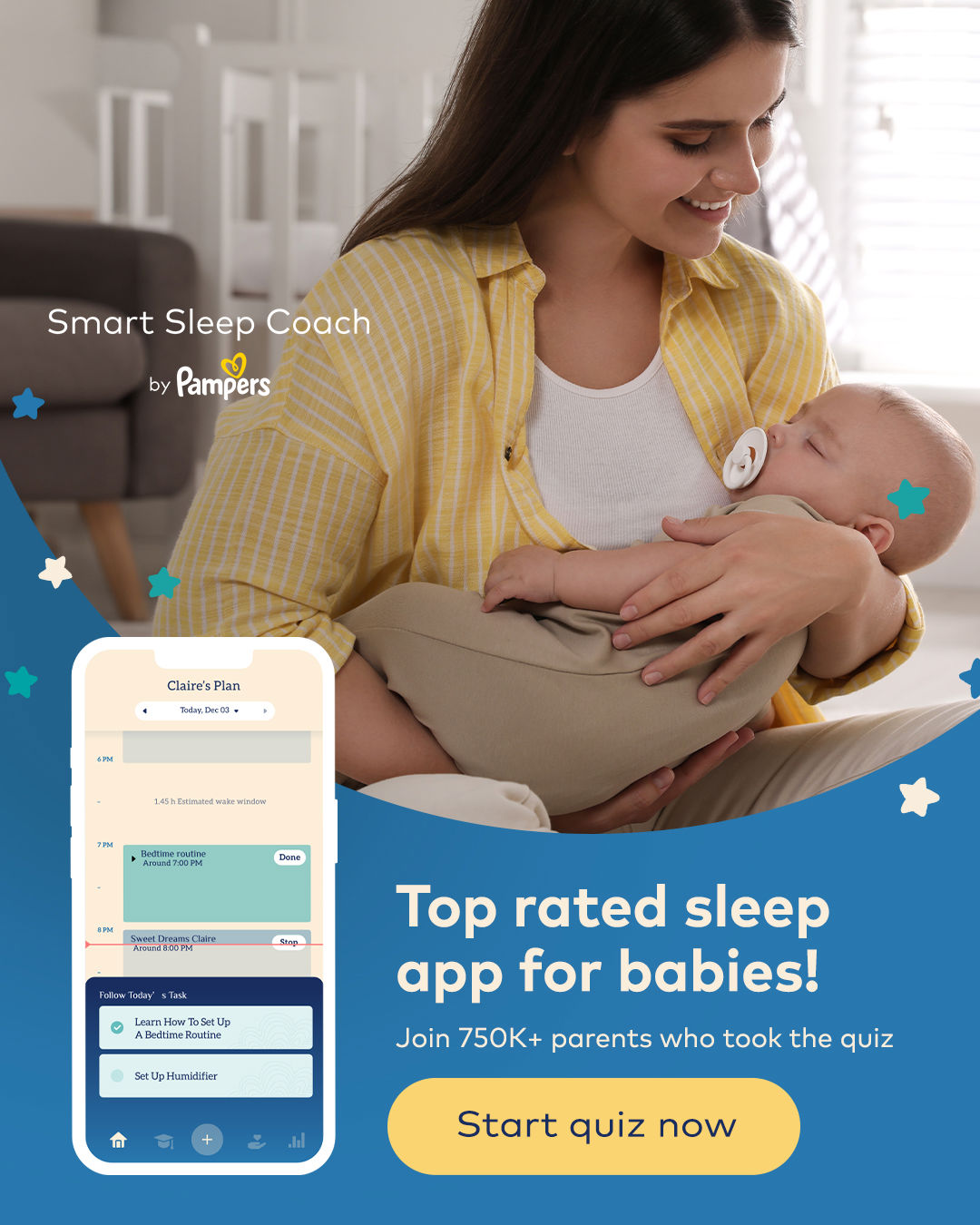
The information on the Your Baby Club website is not intended to be a substitute for professional medical advice, diagnosis or treatment. Always discuss any health concerns with a qualified healthcare provider and carefully review all guidance that comes with any medications or supplements before taking.

